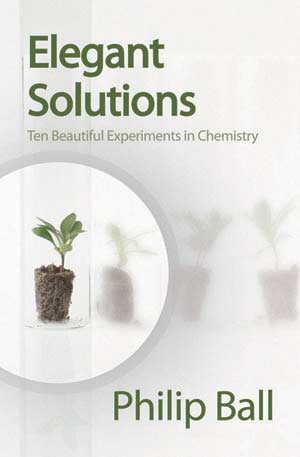 Elegant Solutions: Ten Beautiful Experiments in Chemistry by Philip Ball
Elegant Solutions: Ten Beautiful Experiments in Chemistry by Philip Ball
Offering ten suggestions of what may be the most beautiful experiments in chemistry, this book provides insights into the way chemists think and work, and demonstrates how what they do affects the rest of science and the wider world.
Where does beauty reside in experimental chemistry? Is it in the clarity of the experiment’s conception? The design of the instrumentation? The nature of the knowledge gained, or of the products made?
BUY ON AMAZON
The book opens with an experiment conducted in the seventeenth century by the Flemish physician Jan Baptista van Helmont, in which he measured the growth of a willow tree in a pot over five years, nourished only (or so it seemed to him) by water. The results led van Helmont to conclude that everything in our world is made of water. The experiment was simple and quantitative, and if the conclusion drawn from it was quite wrong, it was no less beautiful for all that.
This exploration of beauty in experimental chemistry, commissioned by the Royal Society of Chemistry, will stimulate scientists and non-scientists alike to think anew about how we come to know about the world, how science and art are related, and how science tells (and sometimes distorts) its best-loved stories. (Royal Society of Chemistry, 2005)
Elegant Solutions” has been awarded the 2007 Dingle Prize by the British Society for the History of Science for “the best recent book that communicates the history of science, technology and or medicine to a wide audience of non-specialists”.
Royal Society of Chemistry (2005) ISBN 0-85404-674-7
